For my phenology place in my hometown, I chose my favorite part of route 22 going around the Kensico Reservoir in North Castle, New York. It’s a hard spot to describe and explain its significance to me, but I will definitely do my best.
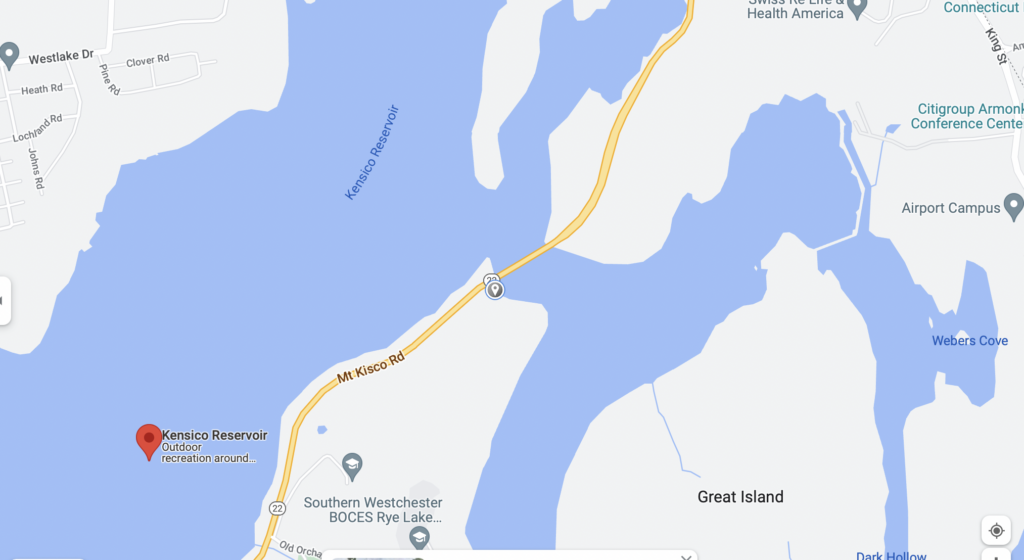
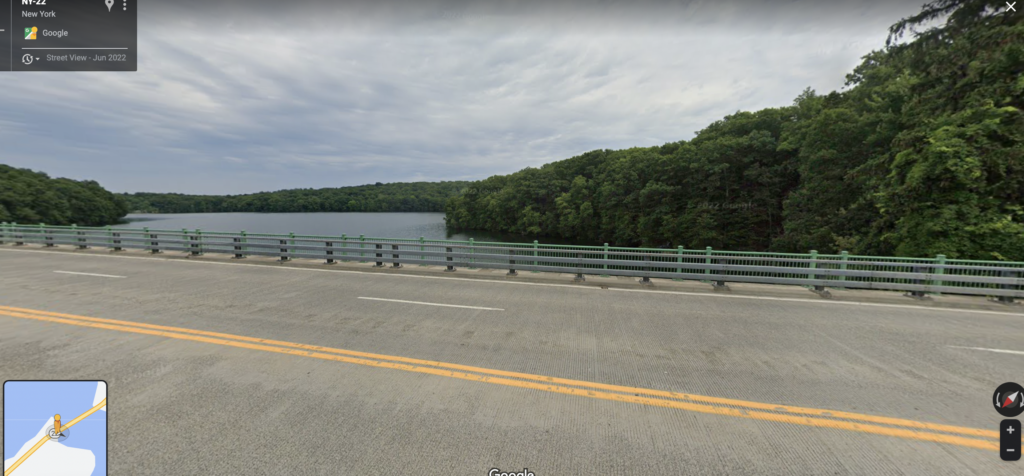
View of the water from the bridge, my spot was underneath
Still of route 22 that shows the shoulder where you park your car to access my spot (cars love speeding down this road, getting to and from your car is scary)
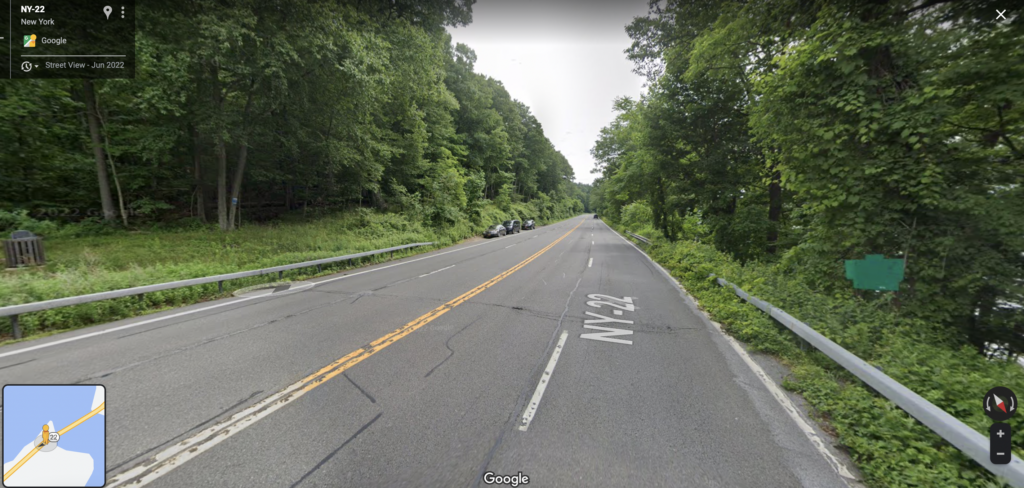
For context, I live in Westchester County, New York. The whole county is made up of suburbs of New York City, with a mix of urban and natural areas. The Kensico Reservoir is a part of the Kensico watershed, which supplies drinking water to New York City, so the recreational use of the reservoir is very closely monitored by New York City Environmental Police. This is backed up by the various signs along the side of the road, stating that permits are required for recreation (fishing and kayaking/canoeing). Access to the waterfront is achieved by parking on the shoulder of the highway and walking down steep hills until you reach it. From the steep, slippery hills, the proximity to a highway notorious for speeding and its winding road, and a required permit for access, this spot is very inaccessible. The views, however, are unmatched. I started frequenting this spot when my older sister first got her license and would take me out for drives. Pulling off the already naturally beautiful highway to walk along the bridge, sit at the waterfront, or even fish/watch people fish made me feel genuinely connected to the more-than-human world. Route 22 made me fall in love with environmental science.
I chose this spot not only for its significance in my life but for its similarity to my phenology spot in Burlington at Salmon Hole. Both places are located at important bodies of water, surrounded by rock but heavily forested, and located next to areas of heavy car use with cities close by. I thought it would be interesting to see the similarities and differences between these two spots.
From the walk alone, I can say that the Kensico Reservoir is more inaccessible. It also definitely faces fewer impacts of pollution from runoff since this is a larger body of water and despite being surrounded by a highway, is located at a higher elevation than nearby cities and is surrounded by thick forests to act as a buffer.
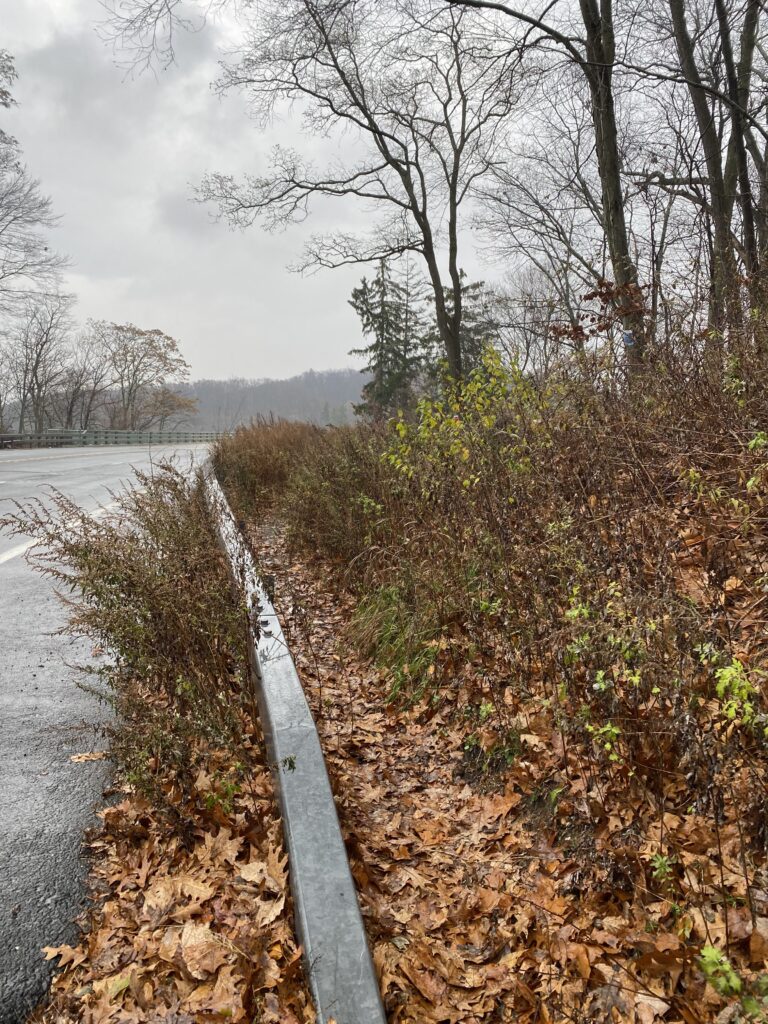
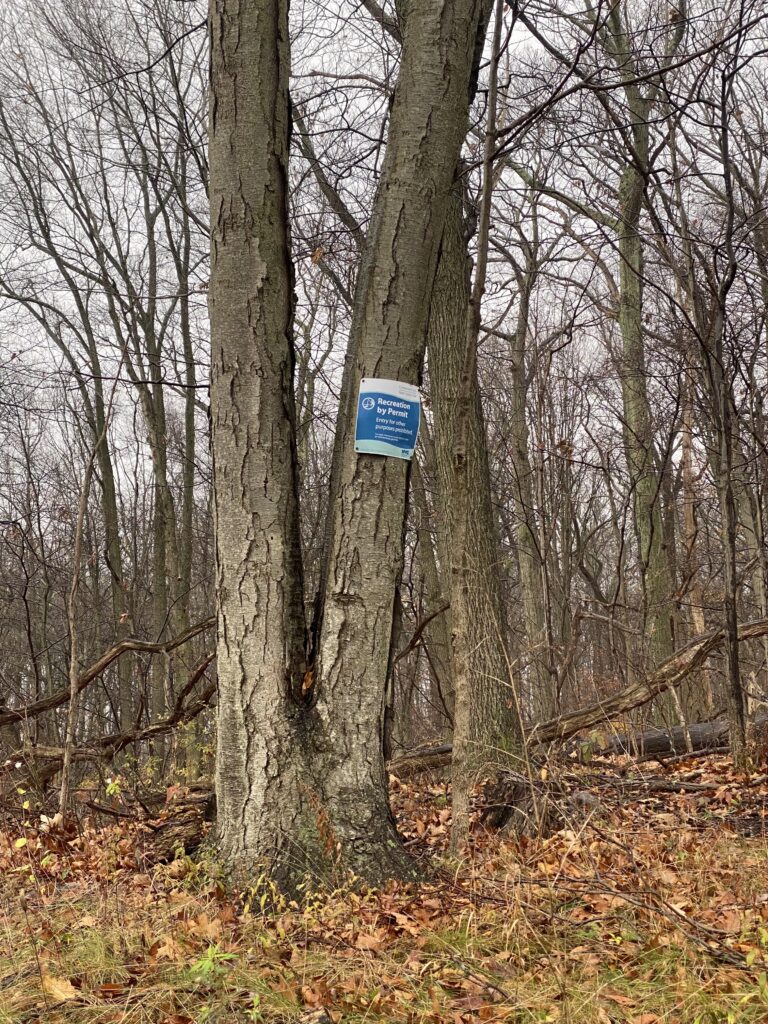
Plenty of small plants were found along the reservoir waterfront, including common mugwort, white snakeroot, porcelain berries, American pokeweed, common reed, oriental bittersweet, winged euonymus, and groundsel trees. Woody plants included red oak, Norway maples, white spruce, American beech, some sort of apple tree (likely crab apple), Lombardy poplar, and chestnut oak. Trees were larger and closer to the waterfront compared to Salmon Hole. There were also more species of weeds and smaller non-woody plants at Kensico than at Salmon Hole.
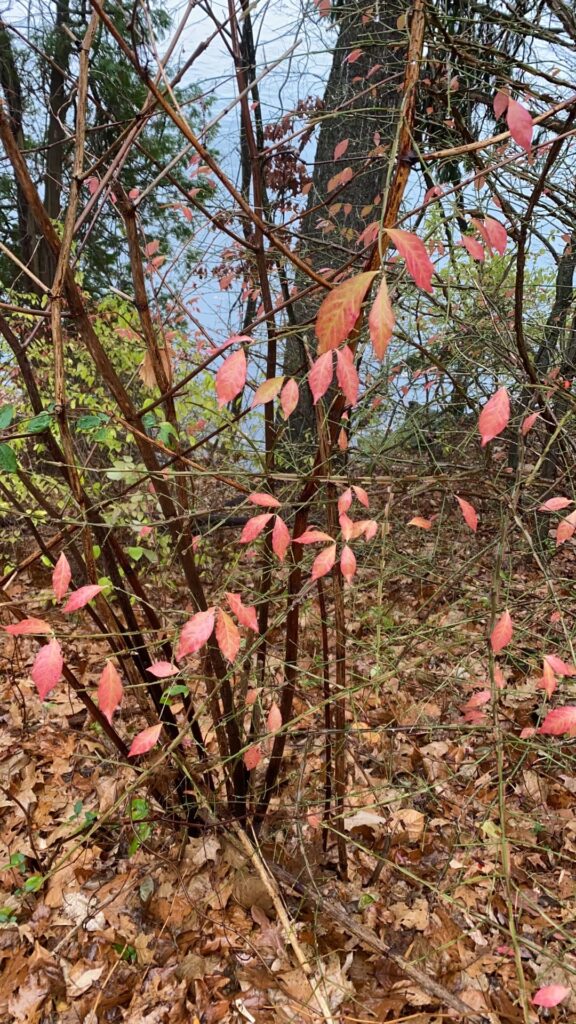
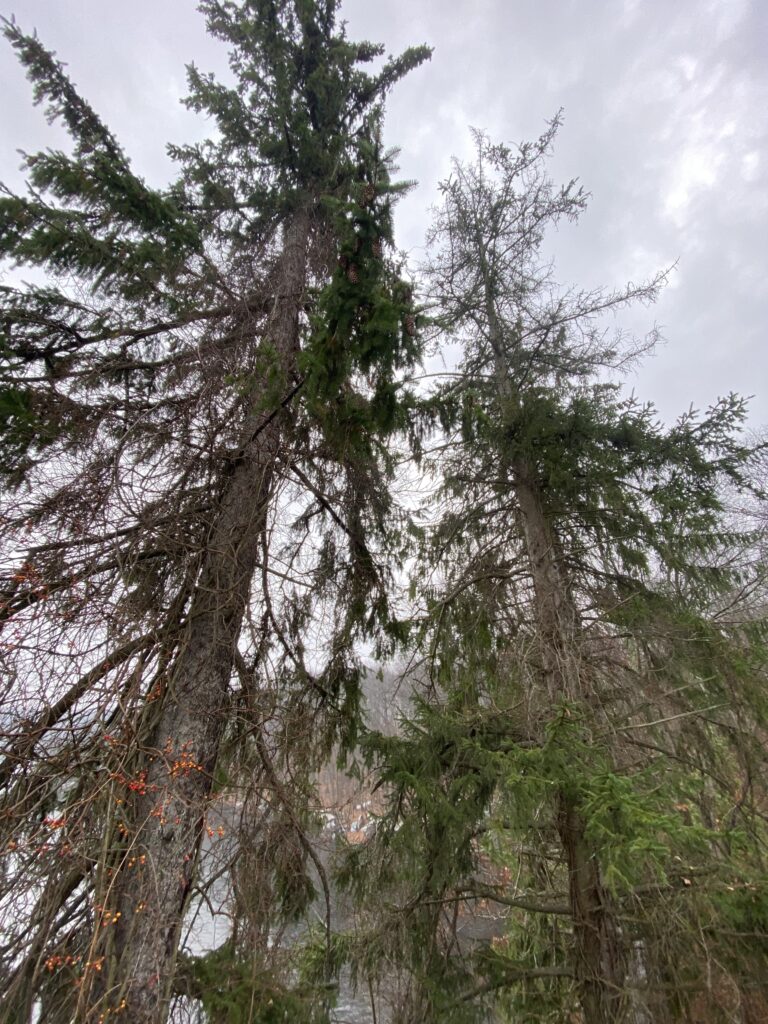
When I visited this spot, it was very rainy. Some observed phenological change was a large amount of leaf litter on the floor, with many trees being bare. Weeds were slowly dying off as well, although many were still intact despite being brown and shriveled. Not much animal activity could be found, but that was likely due to the short amount of time I stayed since deer are known to live in the forests along this part of route 22.
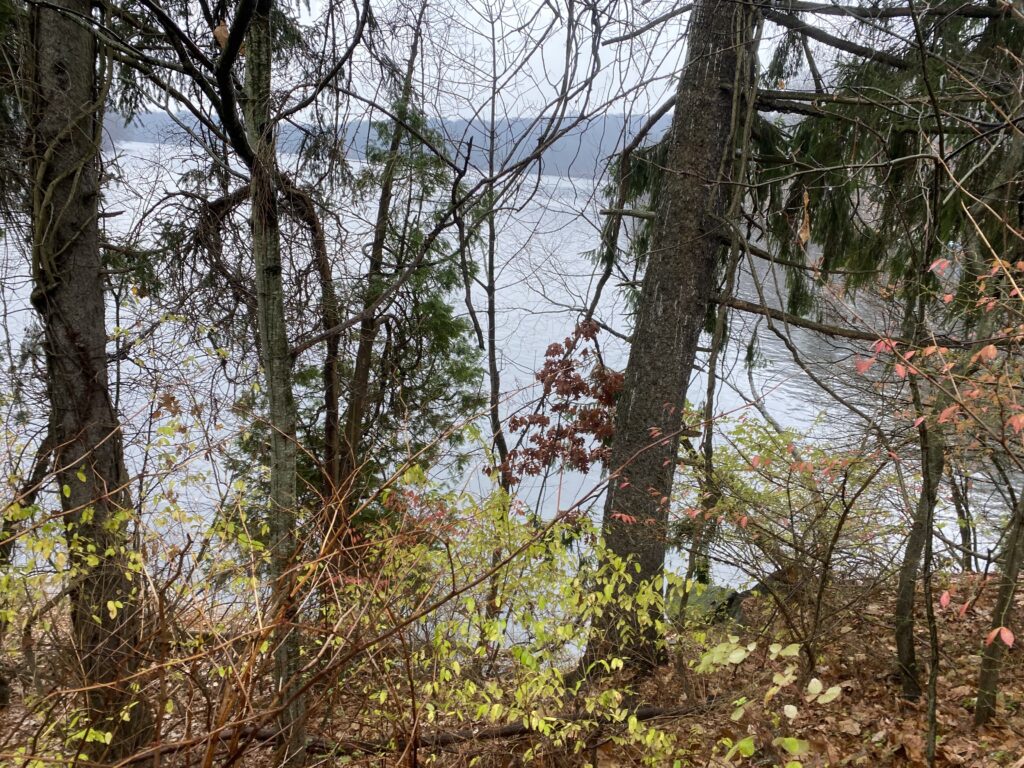

There was lots of trash in the forests leading to the edge of the water, so I collected what I could and properly disposed of it. This was my attempt to give back to this place. Fishermen were along the edge of the water so I tried my best to not disturb them while I was doing this, but I definitely missed out on some spots where I knew there was lots of trash. I’ll make sure to come back soon with a larger trash bag.
It was very rewarding to come back to this place I cherished for so long for its beauty, and be able to look at it through the lens of a phenologist. Never before did I know how to identify the trees I drove past so often in awe, or understand how environmental and societal factors affect this water’s health. I’m glad to be able to share such a special place of Westchester and relate it to my special place in Burlington:)